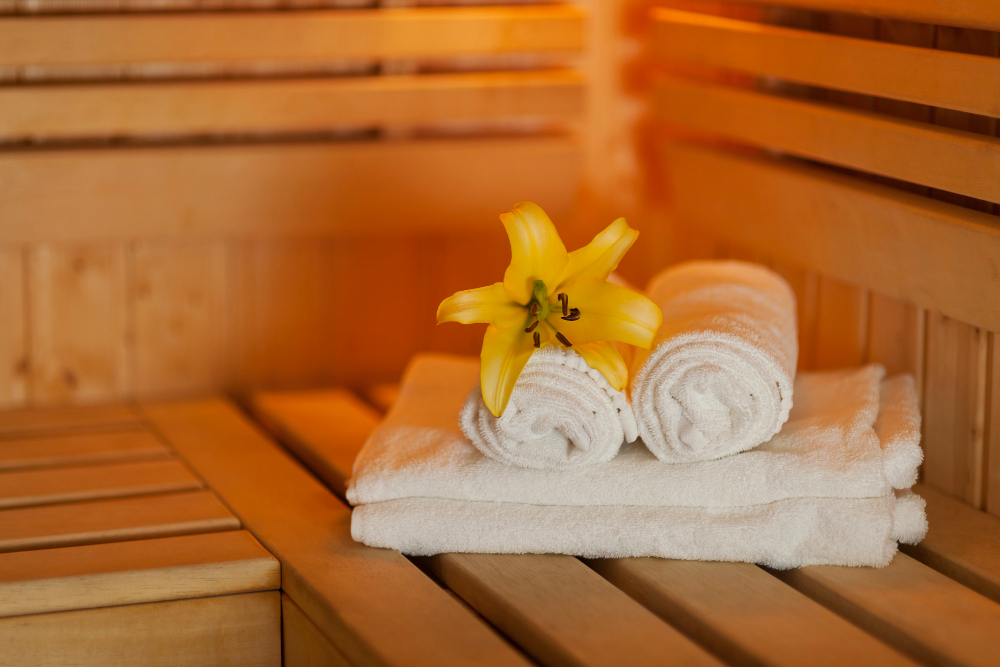
What is Sauna?
A sauna , or sudatory, is a small room or building designed as a place to experience dry or wet heat sessions, or an establishment with one or more of these facilities. The steam and high heat make the bathers perspire. A thermometer in a sauna is typically used to measure heat, a hygrometer can be used to measure levels of humidity or steam.What is Sauna?
A sauna , or sudatory, is a small room or building designed as a place to experience dry or wet heat sessions, or an establishment with one or more of these facilities. The steam and high heat make the bathers perspire. A thermometer in a sauna is typically used to measure heat, a hygrometer can be used to measure levels of humidity or steam.How good is Sauna?
Increased frequency of sauna bathing is associated with a reduced risk of sudden cardiac death, cardiovascular disease, and all-cause mortality. Its usage is also associated with lower markers of inflammation in the blood and a reduced risk of high blood pressure. In addition, it is associated with a decreased risk of pneumonia and may temporarily relieve symptoms of the common cold.It is also associated with a reduced risk of dementia and Alzheimer's disease.
How good is Sauna?
Increased frequency of sauna bathing is associated with a reduced risk of sudden cardiac death, cardiovascular disease, and all-cause mortality. Its usage is also associated with lower markers of inflammation in the blood and a reduced risk of high blood pressure. In addition, it is associated with a decreased risk of pneumonia and may temporarily relieve symptoms of the common cold.It is also associated with a reduced risk of dementia and Alzheimer's disease.
How to Sauna?
Increased frequency of sauna bathing is associated with a reduced risk of sudden cardiac death, cardiovascular disease, and all-cause mortality. Its usage is also associated with lower markers of inflammation in the blood and a reduced risk of high blood pressure. In addition, it is associated with a decreased risk of pneumonia and may temporarily relieve symptoms of the common cold.It is also associated with a reduced risk of dementia and Alzheimer's disease.Smoke sauna (Finnish savusauna, Estonian suitsusaun, Võro savvusann) is one of the earliest forms of the sauna. It is simply a room containing a pile of rocks, but without a chimney. A fire is lit directly under the rocks and after a while the fire is extinguished. The heat retained in the rocks, and the earlier fire, becomes the main source for heating the sauna.
The smoke-sauna stove is also used with a sealed stone compartment and chimney (a heat storage-stove) which eliminates the smoke odour and eye irritation of the smoke sauna. A heat storage stove does not give up much heat in the sauna before bathing since the stone compartment has an insulated lid. When the sauna bath is started and the löyly shutter opened a soft warmth flow into the otherwise relatively cold (60 °C; 140 °F) sauna.
A continuous fire stove, instead of stored heat, is a relatively recent invention. There is a firebox and a smokestack, and stones are placed in a compartment directly above the firebox. It takes a shorter time to heat than the heat-storage sauna, about one hour. A fire-heated sauna requires manual labor in the form of maintaining the fire during bathing; the fire can also be seen as a hazard.
The most common modern sauna types are those with electric stoves. The stones are heated up and kept on temperature using electric heating elements. There is a thermostat and a timer (typically with eight hours' maximum delay time, followed by one hour's continuous heating time) on the stove. This type of heating is generally used only in urban saunas.